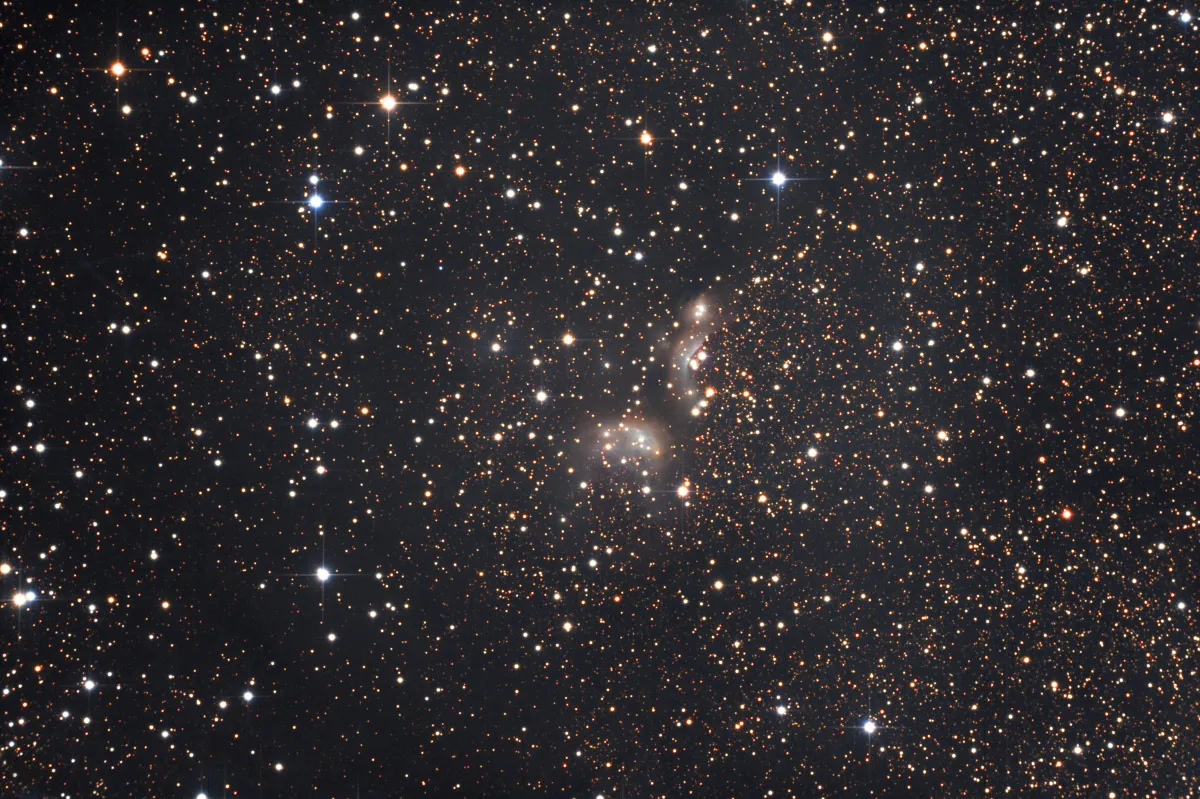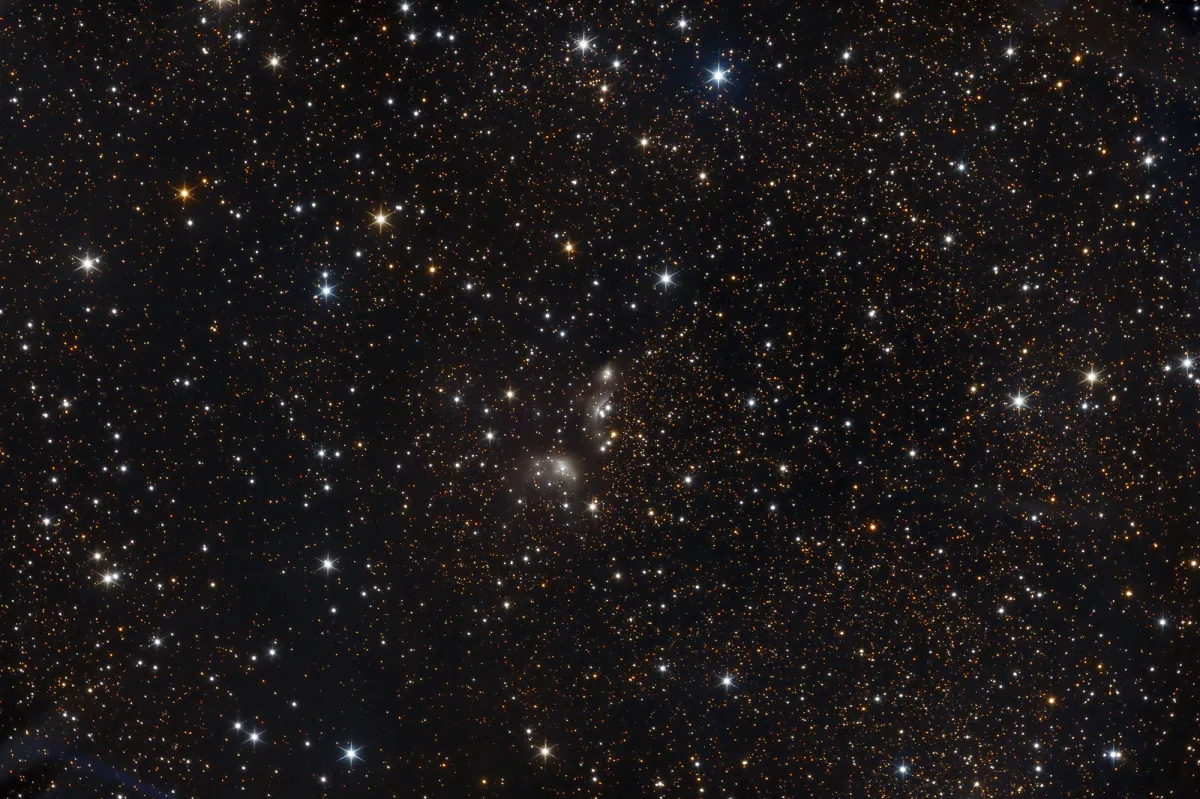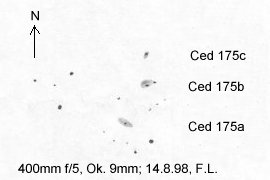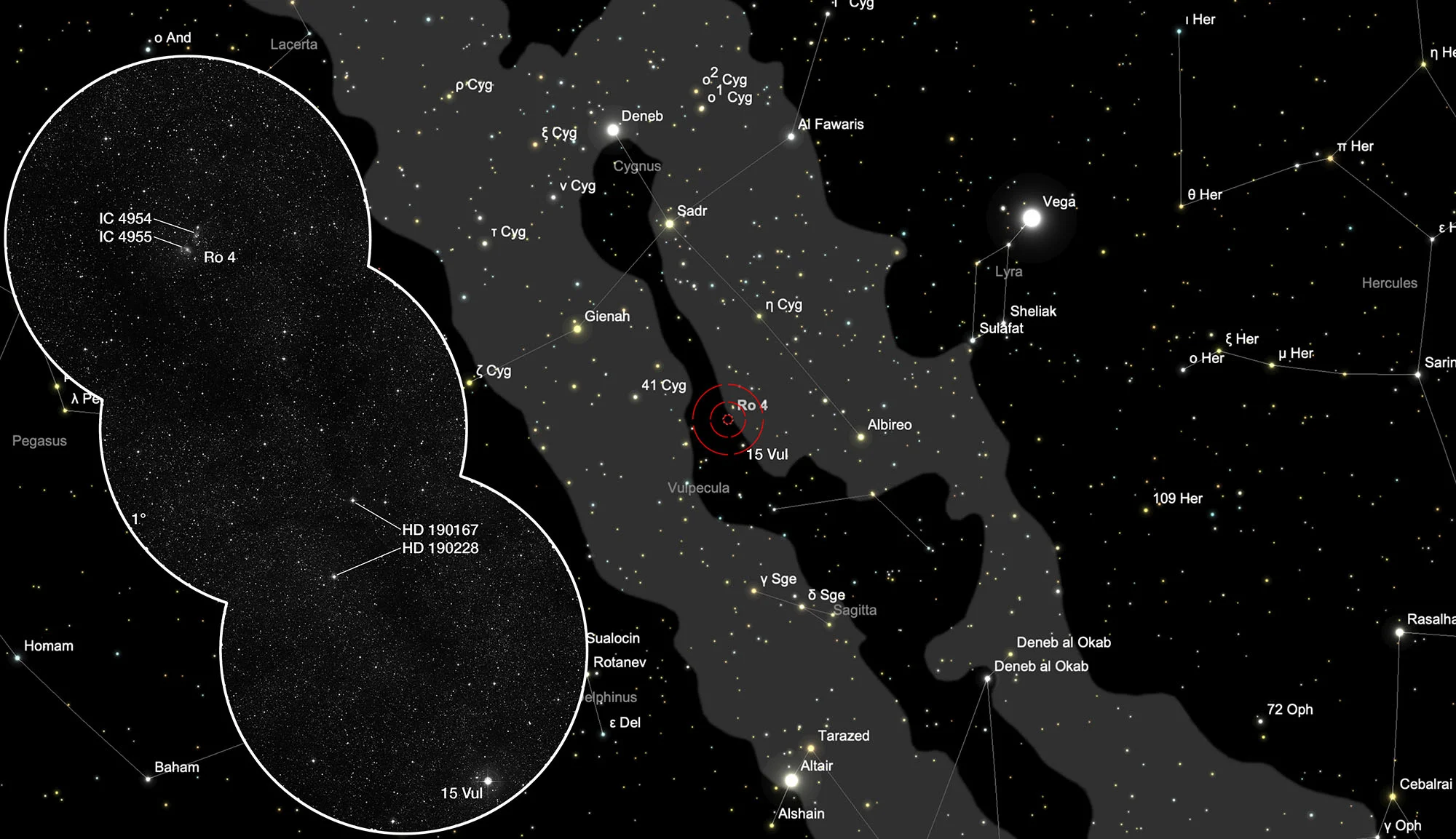Cluster Roslund 4 & Nebula IC 4954/5


Object Description
Roslund 4 is a Trümpler II 3 m n open star cluster and about 6.3 million years old. Translated this means: a cluster with a medium number of member stars (m=medium), which stands out from the environment and shows a slight concentration (II) and has a rather uneven distribution of brightness among the cluster members (3="bright and faint stars in the cluster"). The "n" stands for a nebula involved in the star cluster.
| Name | Cl Roslund 4 |
| Object Type | Open Cluster |
| Right Ascension (J2000.0) | 20h 04m 48s |
| Declination (J2000.0) | +29° 12' 02" |
| Parallaxes | 0.423 mas |
| Radial velocity | -15.7 km/s |
| Redshift z | -0.000052 |
| Angular size | 7.3' × 7.3' |
| Magnitudes | B 10.73; V 10 |
| Identifiers | C 2002+290; Cl Roslund 4; OCISM 27; OCl 138; [KPS2012] MWSC 3246 |
IC 4954 and IC 4955 is an emission and reflection nebula about 330 arcseconds in size in which Roslund 4 is embedded. The nebula exhibits strong variations in brightness and therefore breaks up into three regions, labeled Ced 175a, Ced 175b, and Ced 175c. These go back to a work by Sven Cederblad at the Lund Observatory in Sweden (1946).
How to find Roslund 4?
Star cluster Roslund 4 is located in the constellation Vulpecula, which lies between Sagitta and Cygnus. On 22 July it is in opposition to the Sun and crosses the meridian at local midnight. This is favourable for observation in the months of March to December. Originating from 15 Vulpeculae, a 4.6 mag star, 50 arc minutes north-northeast is a 13 arc minute wide pair of 7th magnitude stars HD 190167 and southerly HD 190228 . Beyond the more northerly of the two stars, the connecting line 15 Vul - pair is extended by a further 50 arc minutes.
Visual Observation
Because the Roslund Catalog star clusters were found spectroscopically, they are considered difficult for the visual observer. Despite the Trümpler classification mentioned above, this also applies to Roslund 4. However, the bright nebula IC 4954 simplifies the observation considerably.
200 mm aperture: Even in a moderate sky you can see the brightest parts of it from about 20 cm aperture and about a dozen stars can be found around this nebula. However, one can hardly speak of «detached».

400 mm aperture: At 40 cm aperture, Roslund 4 remains an inconspicuous star cluster barely visible against the background; however, the number of faint (fainter 12th magnitude) stars increases significantly. For the visual observer, IC 4954 breaks up into three bright nebulae, which are clearly visible in the 9 mm eyepiece at 400 mm f/5. High magnification should be used for Ced 175c, the northernmost part, as it is small and very close to a 10th magnitude star. In the drawing, the faintest members of the open star cluster have been omitted and the brightest clouds of nebula IC 4954 are shown. No filter was used; the drawn region is about 5x7.5 arc minutes.
